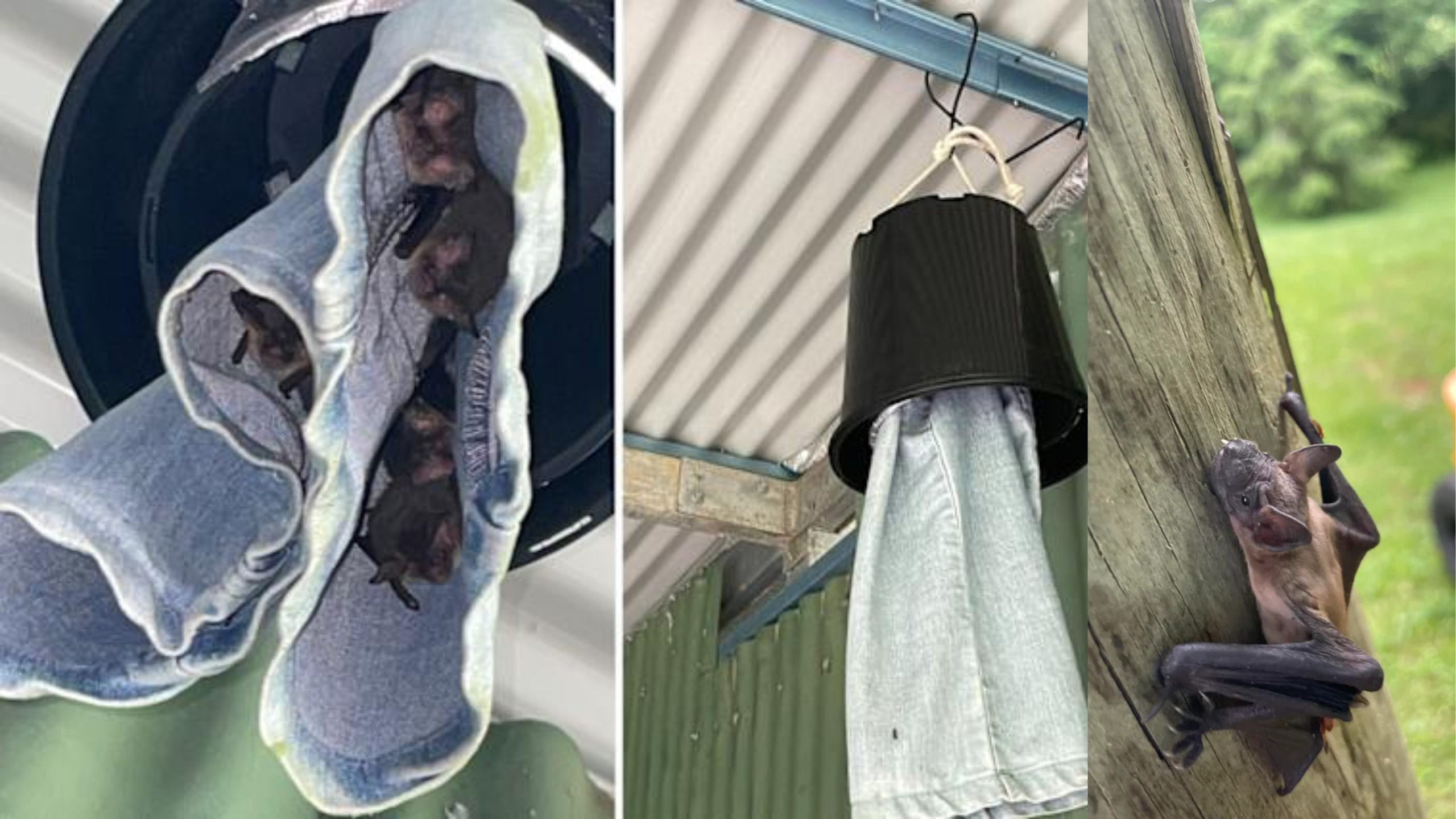In the lush hinterlands of the Sunshine Coast, a unique and eco-friendly bat roost was born—crafted entirely from everyday household items. This inventive project was undertaken by a member of Land for Wildlife, an organization dedicated to conserving native wildlife and their habitats. The goal? To create a simple, low-cost shelter for long-eared bats that often seek refuge after rainstorms.
The Making of a Makeshift Bat Home
The construction of this bat roost is a perfect example of how sustainable ideas can emerge from everyday materials. It was built using just two plastic pots—likely repurposed from a kitchen or garden—and supplemented with parts from old jeans, cable ties, duct tape, and rope. The process was straightforward, yet it required patience, as the roost wasn’t immediately discovered by bats.
The designer’s resourcefulness was key: repurposing items that many would consider trash into a functional shelter for wildlife. This not only saved money but also demonstrated how simple household items can play a significant role in wildlife conservation.
A Welcome Surprise After Rainy Nights
It took some time, but eventually, the roost gained attention. After ten consecutive rainy nights—common in this region—the shelter became a temporary residence for a group of long-eared bats. These bats—likely species such as Nyctophilus bifax, N. geoffroyii, or N. gouldi—are known for their distinctive long ears and preference for roosting in sheltered places.
The bats weren’t necessarily seeking out fancy habitats; they simply needed a safe spot to dry off and escape the rain. The open-air yet protected environment of an old machinery shed proved ideal. When the rain begins to fall, these bats instinctively seek cover in places that offer both dryness and safety from predators.
Understanding the Bats’ Habits

Long-eared bats are fascinating creatures. Normally, they roost in tree hollows, which provide natural shelter and insulation. However, they’re quite adaptable and will often take refuge in human-made structures or even inside banana bags—those mesh sacks used for transporting bananas, which can serve as makeshift shelters.
This adaptability highlights the importance of small, simple structures like the one built in this project. They serve as stepping stones for conservation efforts, especially in areas where natural roosting spots are declining due to habitat loss.
The Inspiration Behind the Idea
The idea for this DIY bat roost originally came from a workshop hosted by Hollow Log Homes, an organization specializing in sustainable, natural habitat design. During the workshop, participants learned how to use common household items to create low-cost, effective nest boxes.
This approach encourages community involvement in wildlife conservation, empowering individuals to make a tangible impact without the need for expensive or complex equipment. It’s a reminder that everyone can contribute—sometimes with just a little bit of ingenuity and the willingness to try.
Why Is This Important?
Bat populations worldwide face threats from habitat destruction, climate change, and human development. Providing simple, safe places for bats to roost can make a big difference in their survival.
Bats are vital to ecosystems—they help control insect populations, pollinate plants, and contribute to biodiversity. Creating accessible roosts supports their natural behaviors and helps maintain ecological balance.
How Can You Get Involved?
If you’re inspired by this story, consider building your own bat roost using household items. Start with simple materials like plastic containers, old fabric, and natural fibers. Place the roost in a quiet, sheltered spot on your property, preferably near trees or water sources.
Remember, the goal is to offer safe, dry places for bats to rest, especially during rainy seasons. Your small contribution can have a meaningful impact on local wildlife.


https://t.me/s/Martin_casino_officials